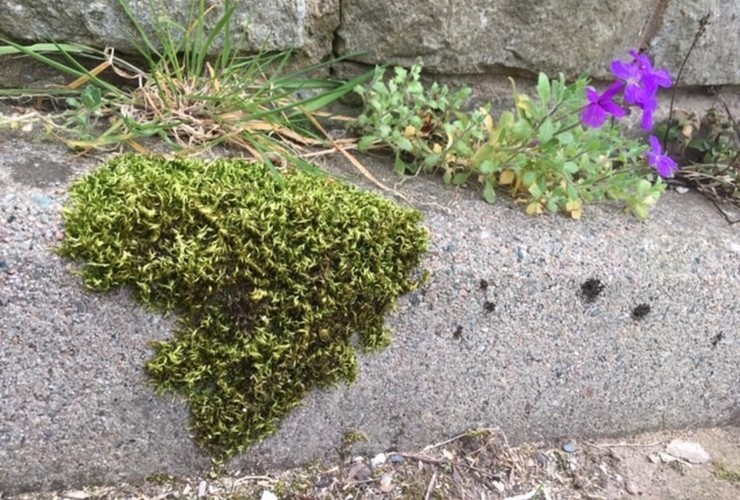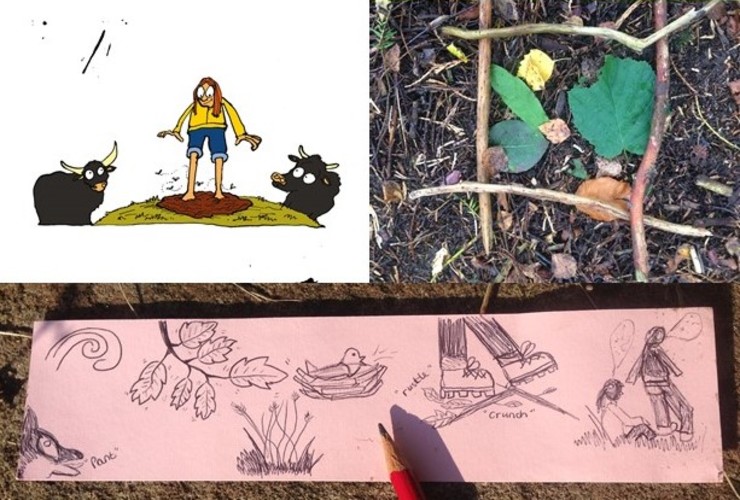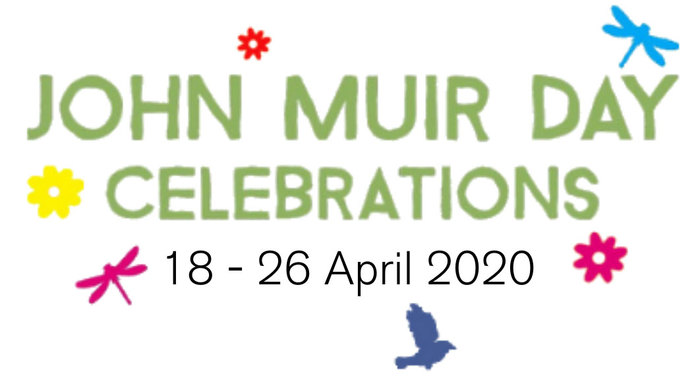Field notes: John Muir in 2020
John Muir Award Cumbria manager Graham Watson reflects on Muir's legacy today and how we can be inspired by Muir in our daily lives

Curious Muir
John Muir is well known for his big journeys such as adventures with his dog Stickeen in Alaska, or his 1,000-mile walk to the Gulf. But right now - as we find our outdoor time more limited - perhaps it’s his intense curiosity and wonder at the detail in nature that seems more relevant, and his ability to find joy in wildness wherever he was.
“All the wild world is beautiful, and it matters but little where we go, to highlands or lowlands, …. always we are in eternal beauty and love. So universally true is this, the spot where we chance to be always seems the best.” - John of the Mountains: The Unpublished Journals of John Muir (1938)
Muir’s curiosity was boundless. His first-hand experiences of looking at nature up close going hand-in-hand with knowledge gained from books. So much in nature can go unseen until we take the time to really notice what’s around us. So, like Muir, let’s awaken our curiosity and appreciate what we have on our doorstep for the time being.

For ideas on what you can do at home see our list of [10 activities for John Muir Day].
Campaigning Muir
Being curious often leads to me to ponder wider connections, and in this case reflect on how Muir’s role in protecting wild places developed. During his adventures he witnessed the destruction of wild places by corporate interests in forestry and water companies. His response was to take action, but did he plant trees? Did he get stuck in, dirty his hands with a practical conservation task? Maybe, maybe not, I’m not sure.
What we do know is that he told stories and campaigned through words. Muir realised that people needed to know what was happening to wild places before they would demand change. It is said that he was initially reluctant to campaign publicly but thank goodness he did. His writings, in which his depth of knowledge shone through alongside a passionate appeal for people to understand what wild places meant to him, were incredibly influential. Indeed, this led in 1903 to President Roosevelt inviting Muir to take him into Yosemite. An adventure for both I’m sure and one that led to the President designating Yosemite as a National Park, one of more than 20 new national parks and monuments.
In my work with the John Muir Award we ask people not just to enjoy and connect with nature but also to care for it by taking active responsibility for wild places. This can extend beyond wild places experienced first-hand to encompass local, regional and global nature; and of course, local action is an important part of responding to global issues.
Typically, the Conserve challenge is met with hands on practical activity, for example planting trees, litter picking, growing food, and maintaining footpaths. But other approaches are just as valid, such as managing your own impact on, and campaigning for, a better world. At a time when we are staying close to home these are accessible actions we can take. It’s time to reflect, take stock of how we tread upon this planet, and to think what we can do ourselves.
Practical Muir
Muir took the view that it is not enough for people to be in sympathy with the plight of the natural world, they must become ‘active conservationists’, as campaigners, as practical project workers, as scientists, as artists, as writers. What might this mean?
- Manage our own impact. Muir famously travelled with a blanket and a bag of food. Clearly, he didn’t need much! Read about how my colleague Al Smith set out to experience a walk through Cairngorm National Park as John Muir. Do you really need more stuff? Where does ‘stuff’ come from and go to? Why not watch The Story of Stuff. Maybe some of the stuff you have but don’t use could be more useful to someone else?
- Take social action. Find out about and get involved in active campaigning and lobbying to make changes that alone we cannot achieve. This might be through your local Wildlife Trust, Friends of the Earth group or similar organisations. Our [Youth Engagement] page has links to the #iwill campaign which aims to make social action part of life for 10-20 year-olds, ReRoute in Scotland, Keeping it Wild in London and A Focus on Nature, the UK's youth nature network. You could also find out about the UK Student Climate Network or your local climate emergency group.
- Celebrate the beauty of nature. We’re happier and more effective if we take time to look after ourselves. "Even when we can’t get out and about, nature can still help us keep well", as beautifully described in this blog from Miles Richardson, Finding a Friend in Nature.
Relevant Muir
John Muir campaigned on what he recognised as the major issues of the day affecting the planet, and if he were alive today, I believe he would do so again on issues such as fossil fuel use, climate crisis, biodiversity loss and plastic pollution. John Muir’s message – that we all need to experience, enjoy and care for wild places – is as relevant today as it ever was. Even when our nature horizon is close to home, our actions and collective voices can reach much further.
^ While writing this blog I took time out to find and look close-up at nature in my own back yard (and even in my kitchen). The photos above show what I found... Where's your nearby nature at the moment? Why not go seek it out and let it awaken your curiosity...
- For more inspiration and activity ideas sign up to our Wild Inside e-newsletter
- This article was created for John Muir Day 2020. See our ideas for [6 ways to mark John Muir Day.]


